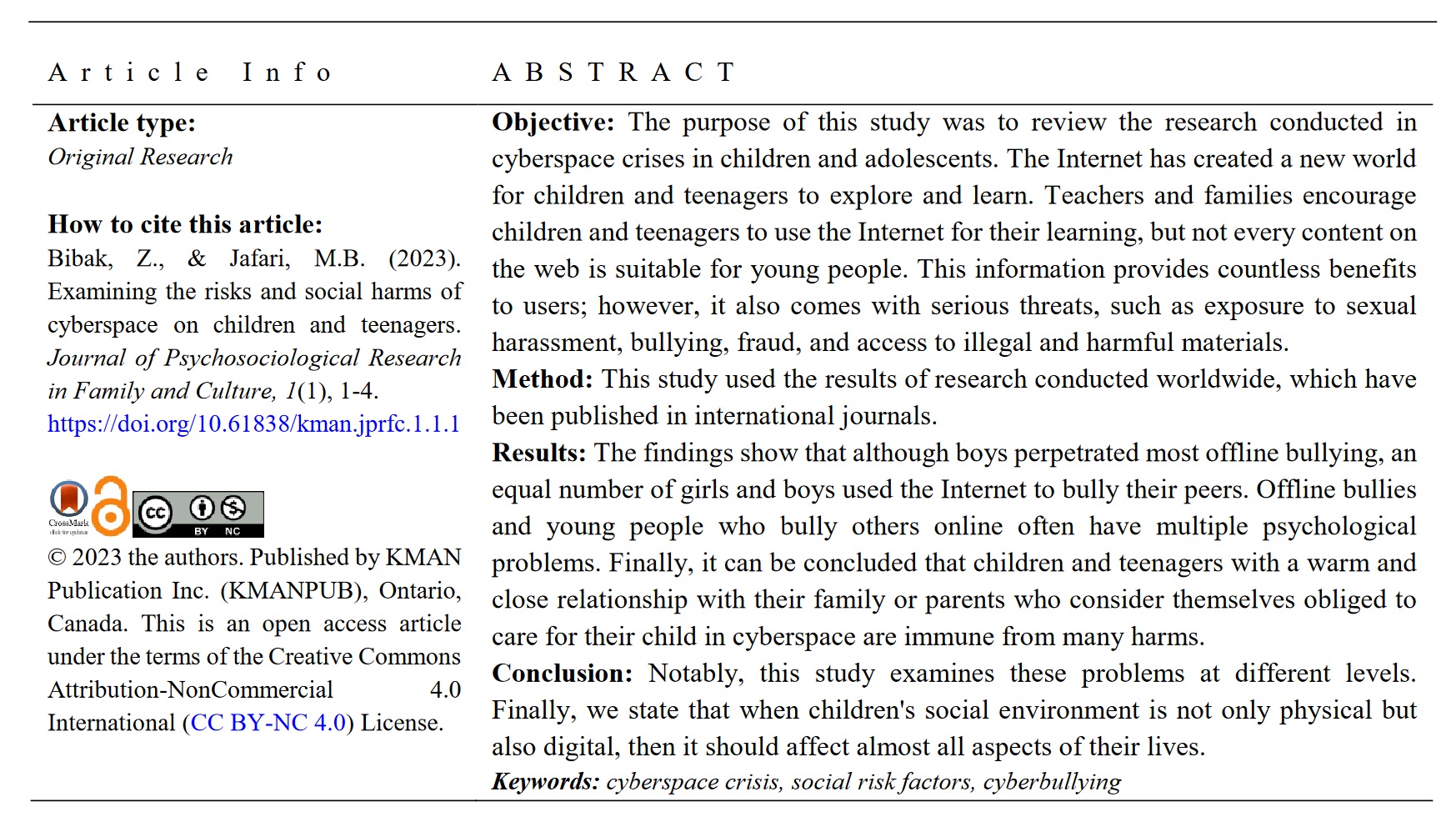Examining the risks and social harms of cyberspace on children and teenagers
Keywords:
cyberspace crisis, risk factors, cyberbullyingAbstract
Objective: The purpose of this study was to review the research conducted in cyberspace crises in children and adolescents. The Internet has created a new world for children and teenagers to explore and learn. Teachers and families encourage children and teenagers to use the Internet for their learning, but not every content on the web is suitable for young people. This information provides countless benefits to users; however, it also comes with serious threats, such as exposure to sexual harassment, bullying, fraud, and access to illegal and harmful materials.
Method: This study used the results of research conducted worldwide, which have been published in international journals.
Results: The findings show that although boys perpetrated most offline bullying, an equal number of girls and boys used the Internet to bully their peers. Offline bullies and young people who bully others online often have multiple psychological problems. Finally, it can be concluded that children and teenagers with a warm and close relationship with their family or parents who consider themselves obliged to care for their child in cyberspace are immune from many harms.
Conclusion: Notably, this study examines these problems at different levels. Finally, we state that when children's social environment is not only physical but also digital, then it should affect almost all aspects of their lives.
Downloads

Downloads
Additional Files
Published
Issue
Section
License

This work is licensed under a Creative Commons Attribution-NonCommercial 4.0 International License.






